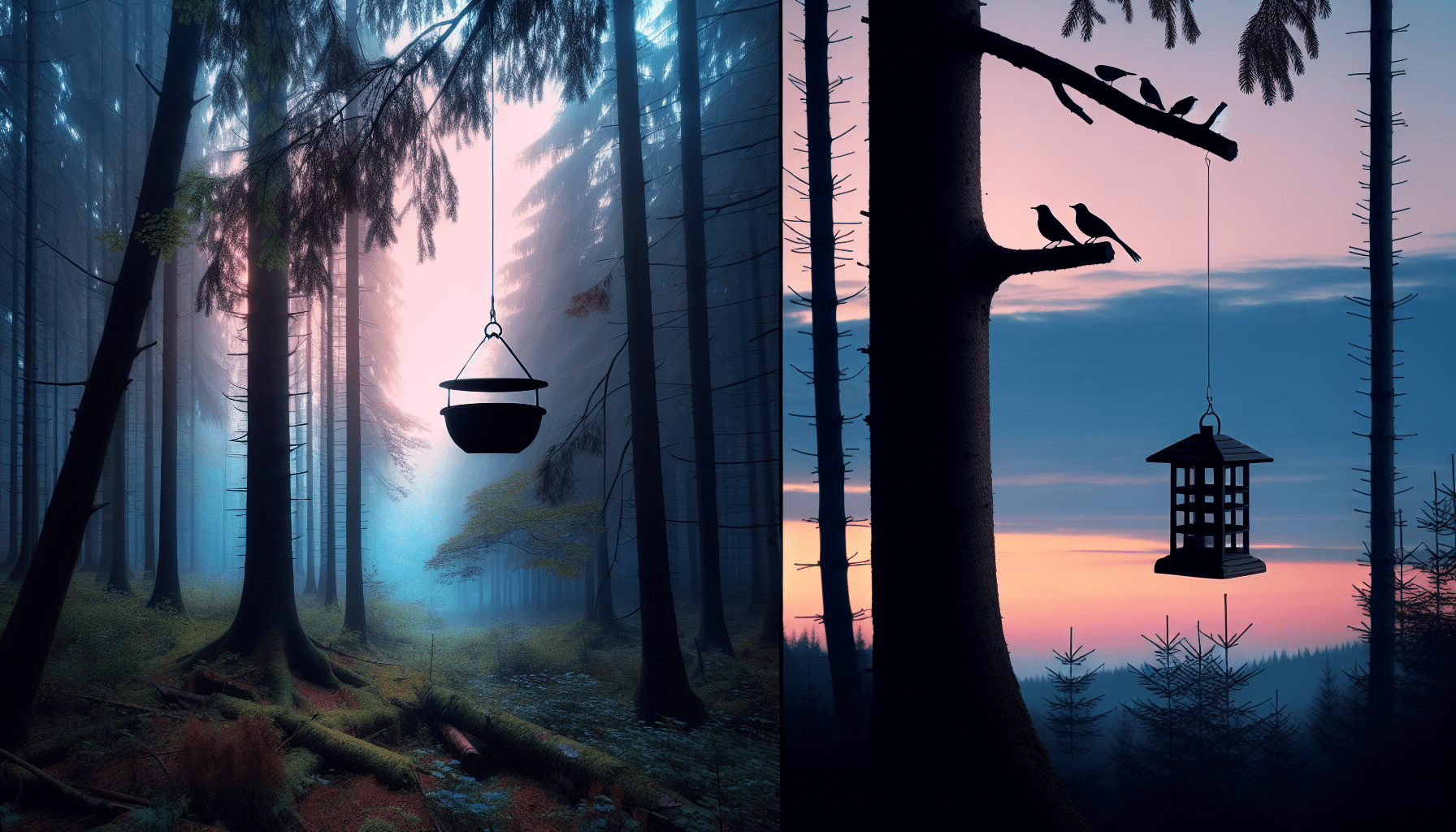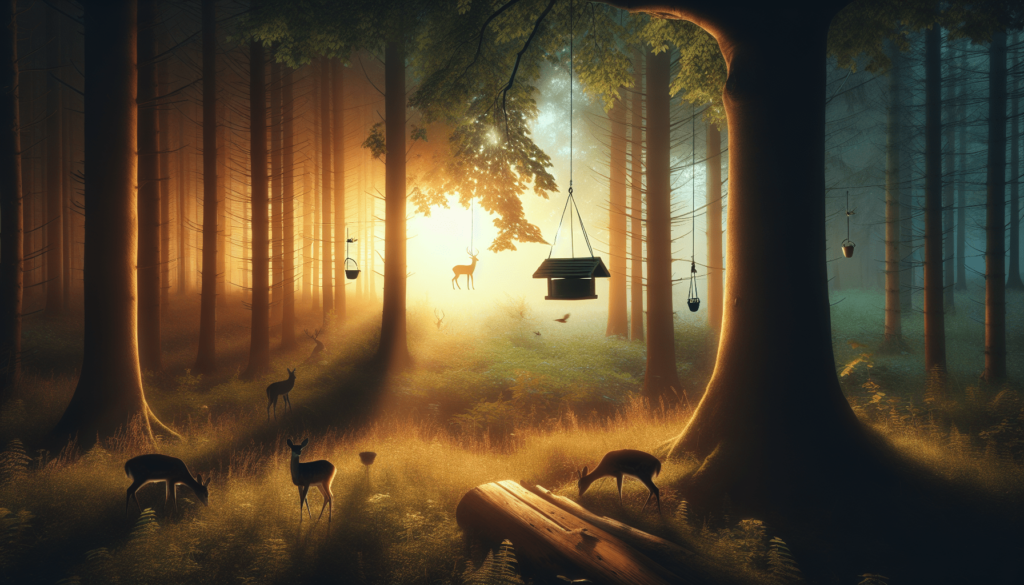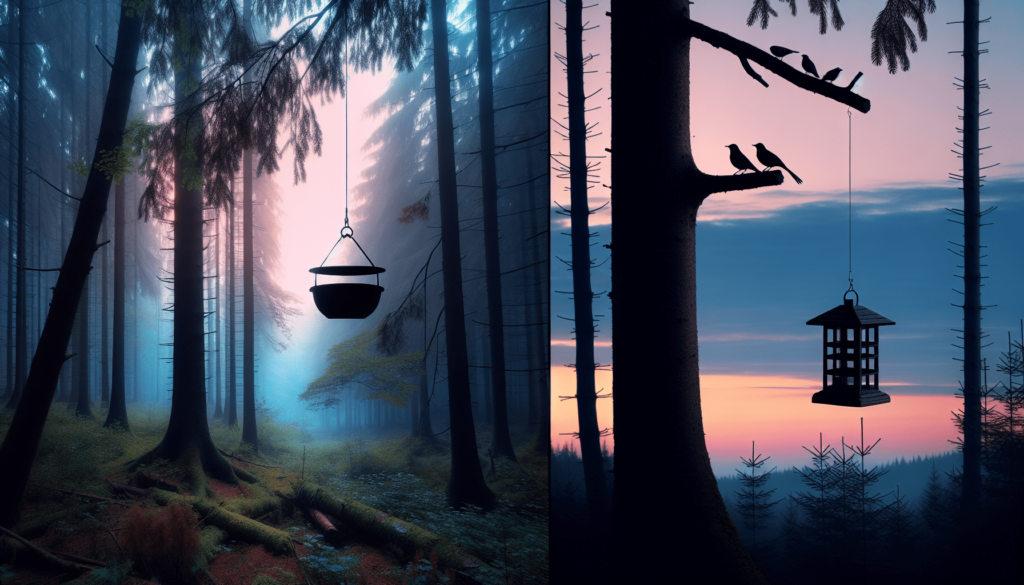
Have you ever wondered whether a Hanging Deer Feeder or a stationary feeder is best for your needs? Choosing the right feeding system for deer can be a nuanced decision that depends on several factors, such as your specific objectives, environment, and budget. Let’s explore this topic in detail to help you make an informed decision.
Understanding Deer Feeding Systems
Feeding deer can significantly impact their health, population, and your hunting experience. The two most common types of deer feeders, hanging and stationary, each come with their own set of advantages and disadvantages.
Why Choose a Deer Feeder?
Before diving into the comparison, it’s essential to understand why you might want a deer feeder in the first place. A good feeder can help attract deer to a specific location, making it easier to observe, photograph, or hunt them. Feeders can also supplement the deer’s natural diet, improving their overall health, particularly in harsh seasons when natural food sources are scarce.
Hanging Deer Feeders: Pros and Cons
Hanging Deer Feeders are suspended from branches, poles, or other structures. They tend to be more versatile and portable but come with some challenges.
Advantages of Hanging Deer Feeders
-
Portability: One of the significant advantages of hanging deer feeders is that they are usually lightweight and portable. You can easily move them around to different locations depending on where the deer activity is highest.
-
Height Adjustment: You can adjust the height of the feeder, making it harder for non-target animals (like raccoons and squirrels) to access the food.
-
Easy Maintenance: Since they are elevated, hanging feeders can often be easier to refill and maintain, avoiding issues like ground-level mold and moisture.
-
Reduction in Spillages: Elevated feeders help reduce the amount of feed that gets wasted or spoiled because it’s less likely to get mixed with dirt or other contaminants.
Disadvantages of Hanging Deer Feeders
-
Stability Issues: Being suspended, they might swing in strong winds, potentially spilling feed and making it harder for deer to access.
-
Installation Challenges: Finding a suitable location with sturdy branches or structures to hang the feeder can be a challenge, especially in areas without mature trees.
-
Limited Capacity: Hanging feeders often have less capacity than stationary feeders, requiring more frequent refills.
-
Vulnerability to Larger Animals: While smaller animals may have a harder time reaching the feed, larger animals like bears could potentially damage hanging feeders.

Stationary Deer Feeders: Pros and Cons
Stationary deer feeders are fixed installations usually positioning at ground level. They offer substantial food storage but also come with their own set of challenges.
Advantages of Stationary Deer Feeders
-
Large Capacity: Stationary feeders tend to have larger storage capacities, meaning you won’t have to refill them as often. Brands like Boss Buck and Moultrie offer high-capacity models.
-
Sturdy and Stable: These feeders are generally more stable and are less likely to spill feed or be affected by strong winds and harsh weather.
-
Variety of Designs: Stationary feeders come in a variety of designs, including gravity-fed options and automatic dispensers, giving you more control over how and when the feed is distributed.
-
Accessibility for All Sizes: These feeders are readily accessible to deer of all sizes, encouraging larger numbers to visit the feeding area.
Disadvantages of Stationary Deer Feeders
-
Less Portable: Once set up, stationary feeders are harder to move. This can be a drawback if you need to change feeding locations frequently.
-
Increased Risk of Contamination: Being at ground level makes these feeders more susceptible to contamination from dirt, moisture, and non-target animals.
-
Challenging Installation: Installing a stationary feeder can be labor-intensive, requiring solid ground footing and sometimes additional materials like cement.
Key Factors to Consider
When choosing between hanging and stationary deer feeders, several crucial factors should be considered:
Location
Do you have plenty of trees or sturdy structures to hang a feeder from? If not, a stationary feeder might be more practical.
Budget
While both types come in various price ranges, hanging feeders are often less expensive, particularly if you don’t need a lot of capacity.
| Factor | Hanging Feeders | Stationary Feeders |
|---|---|---|
| Portability | High: Easy to move and reposition | Low: Fixed installation, harder to move |
| Stability | Moderate: Can swing in wind | High: Stable, less prone to spillage |
| Capacity | Low to Moderate: Usually holds less feed | High: Can store more feed, less frequent refills |
| Maintenance | Easy: Elevated position avoids ground moisture and contaminants | Moderate: Risk of contamination from dirt and moisture |
| Installation | Easy to Moderate: Requires suitable hanging structure | Hard: Labor-intensive, may require cement and solid footing |
| Target Animals | More selective: Height adjustable, limits smaller animals | Less selective: Accessible to all size animals, sometimes non-target |
Environment
Consider the environmental conditions of your location. Windy areas might not be suitable for hanging feeders. If you experience a lot of rain, the ground-level positioning of stationary feeders might lead to quicker spoilage unless adequately protected.
Animal Behavior
Understanding the behavior of deer in your area can also influence your decision. If they are accustomed to ground feeding, they might take longer to adjust to a hanging feeder. Conversely, if they are used to bypassing hanging objects, they might adapt more quickly.

Popular Brands for Deer Feeders
Let’s take a closer look at some of the reputable brands known for producing high-quality deer feeders:
Moultrie
Moultrie is well-regarded for both hanging and stationary deer feeders. They offer a range of feeders with advanced features like programmable timers and high-capacity options tailored for serious wildlife enthusiasts.
American Hunter
American Hunter specializes in durable and innovative deer feeders. Known for their reliability, their models include both hanging and stationary options. Their feeders often come with features like solar chargers and digital timers.
WILDGAME INNOVATIONS
WILDGAME INNOVATIONS produces various deer feeders designed to enhance wildlife management efforts. Their products are known for ease of use and durability, catering to both beginners and experienced users.
SolutionsPatIQ
SolutionsPatIQ is another brand that you can trust for quality deer feeders. They focus on developing feeders that are efficient and long-lasting, making your feeding tasks more straightforward.
Highwild
Highwild offers a wide range of deer feeding solutions. Their feeders are known for being highly customizable, allowing you to adjust settings to perfectly match your feeding needs.
Boss Buck
Boss Buck specializes in larger, high-capacity stationary feeders. Their products are known for excellent build quality and durability, making them ideal for long-term use.
On Time Wildlife Feeders
On Time Wildlife Feeders is well-known for innovation in deer feeding technology. They offer both hanging and stationary feeders with features that help ensure consistent and reliable feeding patterns.
Gravity Fed
Gravity Fed feeders are designed to distribute food naturally, without the need for batteries or timers. These are usually stationary and are great for those who prefer a low-maintenance option.
Keilyn
Keilyn produces budget-friendly deer feeders without compromising on quality. They offer both hanging and stationary models that provide real value for money.
Andee
Andee is another trusted name in the deer feeding market. They focus on building highly durable and efficient feeders, with a variety of options suitable for different needs.
KUMFJ
KUMFJ creates reliable deer feeders with a focus on ease of use and user-friendly features. Their feeders are built to last, ensuring you get maximum utility out of your investment.
Choosing the Right Feeder for Your Needs
Ultimately, the choice between hanging and stationary deer feeders will come down to your specific needs and circumstances. Ask yourself the following questions to help make your decision:
-
How often can you refill the feeder? If you can’t refill frequently, a stationary feeder with a larger capacity might be better.
-
Do you need the flexibility to move the feeder? If so, a hanging feeder offers more portability.
-
What are the environmental conditions? Consider wind, rain, and the types of animals present in the area.
-
What is your budget? Factor in not just the initial cost but also the costs of installation and maintenance.
-
What features are essential for you? Brands like Moultrie and Boss Buck offer advanced features that might be critical for your needs.
Conclusion: Making the Final Choice
When it comes to understanding hanging deer feeders versus stationary feeders, the best choice depends on various factors tailored to your specific needs. Both types have their advantages and disadvantages, making it essential to consider factors like location, budget, environmental conditions, and animal behavior.
Hanging feeders excel in portability and ease of maintenance, making them convenient for those who need frequent location changes and straightforward upkeep. On the other hand, stationary feeders offer larger capacities and stability, suitable for long-term stationary feeding.
Researching reputable brands like Moultrie, American Hunter, WILDGAME INNOVATIONS, Highwild, and Boss Buck can also guide you toward making a well-informed choice. Consider your priorities and constraints, and you’ll find the perfect deer feeder to match your needs.



